Compare
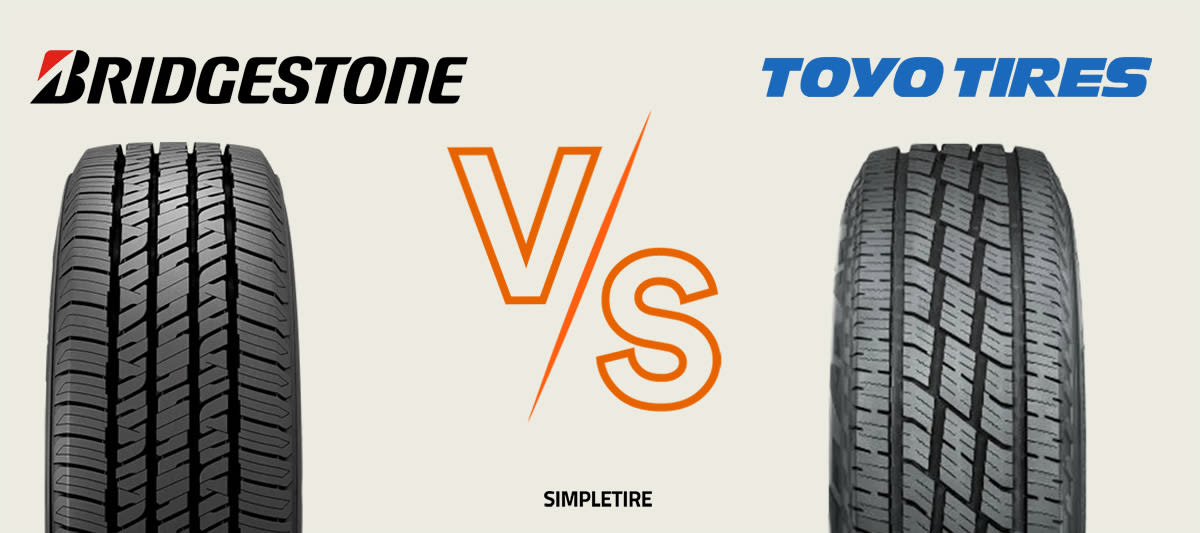
Are you familiar with the highway-terrain designation for light truck and SUV tires? The best way to think of highway-terrain tires is along the same lines as all-season passenger tires. All-season tires take up 84 percent of the market, and for good reason; people depend on them for great wear properties, a generous limited manufacturer’s tread life warranty, predictable and capable handling, composed road manners, year-round grip, and a quiet and refined ride. They’re the Jacks of all trades in the tire world, and though highway-terrain tires share a lot of the same designs and performance goals as all-season tires, they feature beefed-up construction and tougher tread compounds to accommodate the extra weight and power of a truck. Trucks and SUVs are everywhere on the roads these days, taking up the family-car duties that used to belong to sedans and minivans (and station wagons a generation ago), but even many 4WD-equipped trucks don’t really leave the pavement very often. That makes highway-terrain tires a good option for many drivers, just like all-season tires are for drivers of sedans and minivans.
Today, in this head-to-head comparison, we’re going to be looking at the Bridgestone Dueler H/T 685 and Toyo Open Country H/T II. In the course of this comparison review, you’ll see us refer to SimpleScore numbers for both tires; if you aren’t familiar with SimpleScore, it’s the ratings system that gives a quick, comprehensive idea of a tire’s strengths and weaknesses. We look at the tire’s technical information, the specs, manufacturer information, customer reviews, and other data points to come up with 1-10 numerical values for the categories of traction, handling, and longevity, along with an overall average SimpleScore. In the case of the Bridgestone and the Toyo, the SimpleScore numbers shake out like this:
Bridgestone Dueler H/T 685:
- Traction: 9.3
- Handling: 9.1
- Longevity: 8.3
- Overall average SimpleScore: 8.8
Toyo Open Country H/T II:
- Traction: 8.4
- Handling: 8.5
- Longevity: 9.1
- Overall average SimpleScore: 8.6
As you can see, these are two premium highway-terrain tires that compare well to each other and get high marks all around, but as handy as SimpleScore is, it’s still the 30,000-foot view that doesn’t really get into the details of each tire. Let’s go in and take a closer look at this Dueler H/T 685 vs. Toyo Open Country H/T II tires comparison review:
Bridgestone Dueler H/T 685 tires
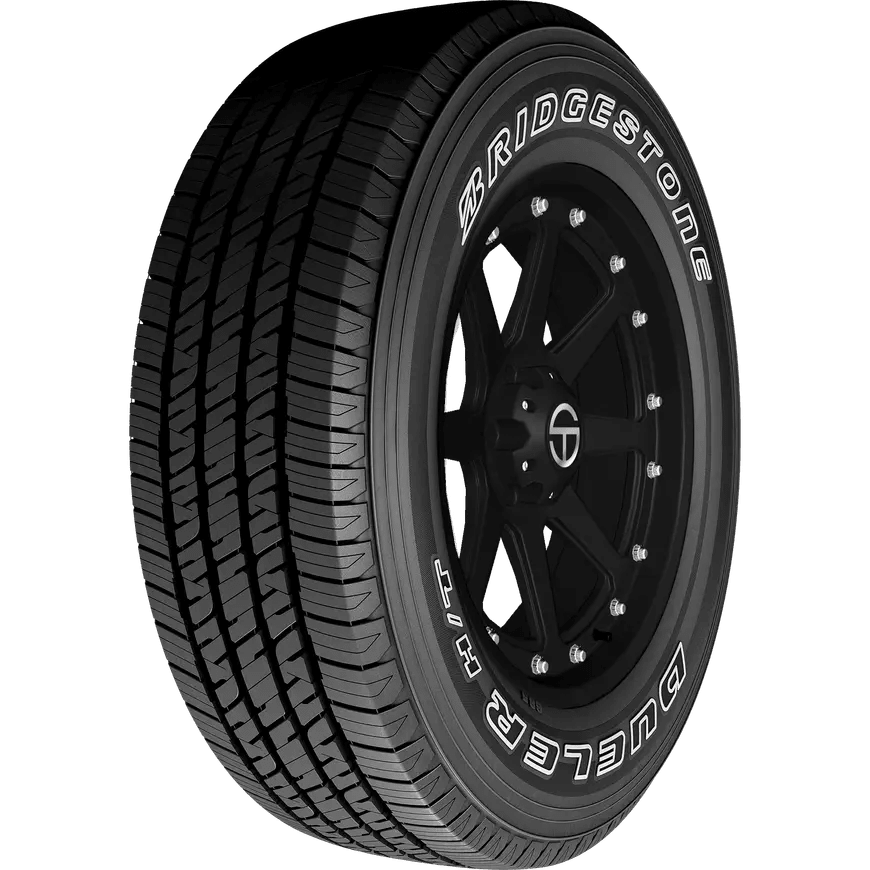
Here’s a quick dive into what the Bridgestone Dueler H/T 685 has to offer. If you want heavy-duty performance in a light-duty truck tire, you’ve come to the right place with the Bridgestone; it’s designed for durability with 2-ply polyester construction, two high-tensile steel belts, and a nylon cap ply for great stability and load handling capacity. Its tread compound is optimized to stay flexible at subfreezing temperatures for winter traction as well as for delivering great resistance to cuts, punctures, abrasions and other damage. Foul weather isn’t a problem, with four circumferential grooves that resist hydroplaning by diverting water away from the tire’s contact patch, and a dense pattern of sipes multiplies traction with hundreds of thin biting edges that slice through snow, slush or standing water.
The tread and tread compound of the Bridgestone Dueler H/T 685 are also designed to help save on fuel with lower rolling resistance. Its contact patch is redesigned to be bigger and flatter, putting more rubber in contact with the road for enhanced handling, braking and traction, and select sizes are available with a great-looking outlined white letter sidewall. The Bridgestone Dueler H/T 685 is covered by a 50,000 mile limited manufacturer’s tread life warranty. SimpleTire’s price on the Bridgestone Dueler H/T 685 starts at $190.96 per tire.
Toyo Open Country H/T II tires
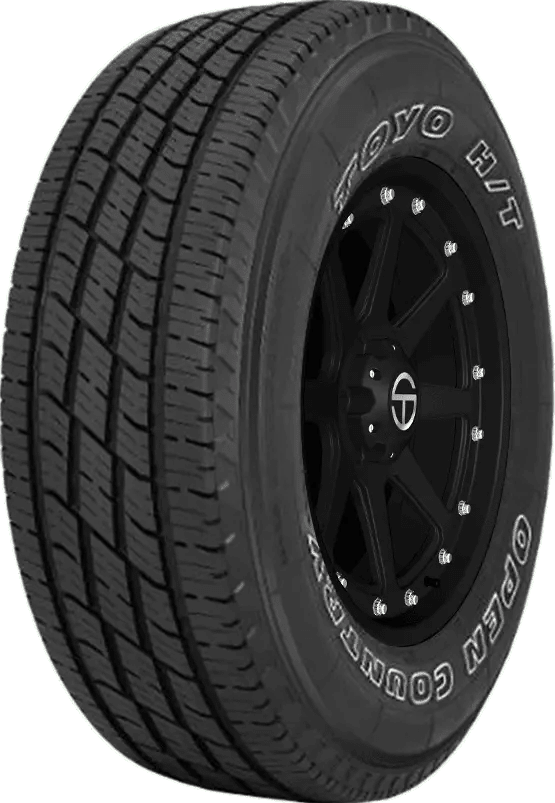
With the Open Country H/T II, Toyo built on and upgraded the proven design of the Open Country H/T to ensure that it lives up to Toyo’s reputation for quality, performance, and value. The Open Country H/T II starts off with a heavy-duty tread compound for extended tread life and beefed-up internal construction. Strategically placed multi-wave sipes minimize uneven wear while enhancing traction in wet or wintry weather, and its system of expanding shoulder grooves, wide adaptive circumferential grooves, and angled/lateral grooves does a great job of delivering dependable grip in changing weather conditions. The Open Country H/T II comes with two separate sidewall designs – classic on one side, sporty on the other. It is also available with an outlined white letter sidewall on select sizes. The Toyo Open Country H/T II is covered by a limited manufacturer’s tread life warranty of 50,000 miles for P-metric sizes and 70,000 miles for LT sizes. SimpleTire’s price on the Toyo Open Country H/T II starts at $128.33 per tire.
Bridgestone Dueler H/T 685 vs. Toyo Open Country H/T II tires on traction
How do the Dueler H/T 685 and Open Country H/T II stack up against each other when it comes to traction? It’s a pretty wide margin, with the Bridgestone weighing in with a SimpleScore of 9.3 vs. 8.4 for the Toyo. We should note first that while both tires are all-season designs, neither tire has the 3 Peak Mountain Snowflake rating for severe winter service and aren’t really designed for heavy snow and slush. While the tread features of both tires are pretty similar, the Bridgestone’s groove system and sipe design give it the edge in the traction category, and its initial tread depth ensures dependable wet-weather grip as well as good wear properties. Our decision:
ADVANTAGE: Bridgestone Dueler H/T 685
Bridgestone Dueler H/T 685 vs. Toyo Open Country H/T II tires on handling
When you’re talking about light trucks and SUVs, you don’t really expect the kind of cornering ability and overall handling that you would expect from a sports sedan, so “handling” is a little relative and subjective in this case. Still, the Bridgestone comes with a SimpleScore of 9.1 for handling vs. 8.5 for the Toyo. The enhanced contact patch of the Bridgestone, along with the continuous center rib and reinforced shoulder blocks, give it the rigidity it needs for crisp steering response and decisive, confident cornering ability at higher speeds. The steel belt package and polyester casing construction of the Bridgestone give it the rigidity it needs to resist deformation as you head into a corner, and the vehicle’s momentum causes it to try to keep moving forward. Our decision:
ADVANTAGE: Bridgestone Dueler H/T 685
Bridgestone Dueler H/T 685 vs. Toyo Open Country H/T II tires on longevity
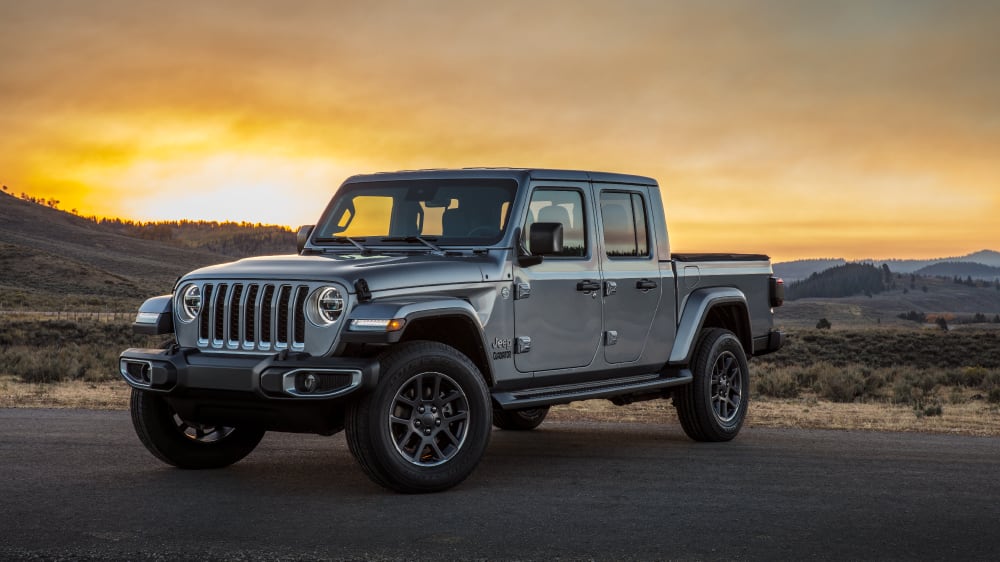
So far, it’s been the Bridgestone that’s been coming out on top, but when it comes to longevity, that’s a bit of a different story. The Toyo has been able to register a SimpleScore of 9.1 vs. 8.3 for the Bridgestone. This one’s clear-cut, with the limited manufacturer’s tread life mileage coverage telling the whole story: a maximum of 70,000 miles for the Toyo vs. 50,000 miles for the Bridgestone. You can’t get much more of a clear difference than that, and our decision is:
ADVANTAGE: Toyo Open Country H/T II
When to use each
The question here is, what do you really need out of a set of light truck tires? If you do a lot of off-roading in mud, sand, loose dirt or rough country with lots of obstacles, then these are probably not the best tires; instead, you should consider all-terrain or rugged-terrain tires. If you have to deal with hard winter weather and snow that piles up 3 or 4 inches deep and stays on the road for days at a time, then the Bridgestone or the Toyo might not be the best choice. On the other hand, if you need a dependable set of tires that’s durable enough for commercial uses such as towing heavy trailers or hauling heavy loads (while still presenting great road manners, ride and handling), then you won’t go wrong with the Bridgestone Dueler H/T 685 or the Toyo Open Country H/T II. These are tires that would be right in their element as replacement tires for vehicles like the Chevy Silverado 1500/2500, RAM 1500/2500, Ford F150/F250, Toyota Tacoma, Toyota Tundra, Chevrolet Tahoe, GMC Acadia, Nissan Titan, Jeep Wagoneer, and Honda Ridgeline.
Which one should you choose?
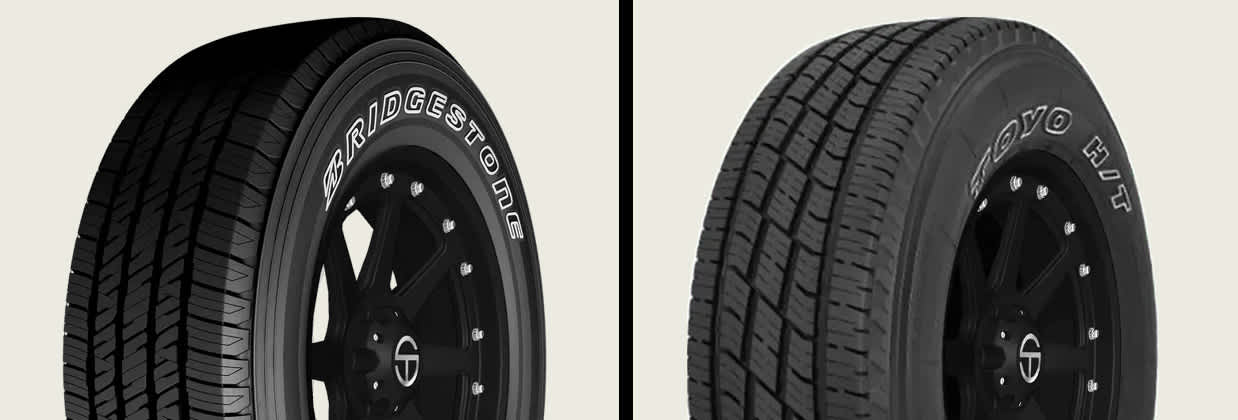
Here’s where it gets tricky. As we’ve seen, both of these tires have their plus and minus points. The Bridgestone does outscore the Toyo when it comes to handling and traction, but that doesn’t mean that the Toyo isn’t a capable tire with great performance in those two categories. Then the Toyo is the hands-down winner when it comes to longevity due to a big advantage in the manufacturer's tread life warranty coverage, and that tips the scales when it comes to value in a pretty significant way. So let’s think about prices: $190.96 starting price ($763.84 for 4) for the Bridgestone vs. $128.33 ($513.32 for 4) for the Toyo. After taxes, installation and fees, that comes out to a price spread of well over $200 for the whole set of tires. Let’s just leave it at this: if you can afford the Bridgestone and put a premium on its handling and traction properties (but are willing to live with a lower mileage warranty), then go with the Bridgestone. If you don’t mind a bit of a tradeoff in handling and traction and are on a tight budget, you should opt for the Toyo. You won’t really be making a bad call either way.
Still not sure which tire to buy? Fortunately, SimpleTire is here to help, and our helpful agents will be more than happy to assist you in selecting the right tire for your ride and budget.
Ready to find the perfect tires?
Search By